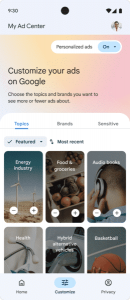Using ‘Near Me’ To Your Advantage
by Aaron Baar, Staff Writer, February 28, 2017
Local marketing used to be a simple process. A business would place an ad in some sort of local media outlet to reach local consumers, who would then patronize that business. But as the Internet — and in particular the mobile Internet — became the go-to resource for people searching for a product or service, it not only did away with many of these local media, it also gave rise to a new form of local marketing: the “near me” search.
When was the last time you used a phone book to find information about a retailer or service company? When was the last time you used your phone? The number of consumer searches involving “near me” moments has exploded in recent years, so much so that search engines have begun using the phrase as a default for mobile searches. The number of location-based searches on Google’s platform has doubled since 2014, according to Forrester, and if you’re not thinking about how it can work for you, you’re late to the game.
“Ten years ago, if you were a consumer and a business was not in the Yellow Pages, they didn’t exist to you. Today, the version of that [is the Internet]. A consumer has 100-200 different ways to discover a business,” Brendan Morrissey, CEO of location-based marketing company Netsertive, tells Search Insider. “If you’re not listed in Yelp, and that’s what a consumer likes, you don’t exist to them.”
Location-based search marketing is not the way of the future; it’s the way of the present. Thanks to a smartphone in every pocket and voice-command in (not quite, but nearly) every car, a business’ storefront is as much in the virtual realm as it is in the physical. It’s incumbent on marketers, particularly the majority of retailers who rely on local traffic to drive their business, to establish that virtual doorway. While the options to list a business can be nearly infinite online, at the very least, local businesses should have a presence on the maps people are using like Google Maps, Apple Maps and navigational programs like Waze, Morrissey says.
“You have to have a digital doorway that is discoverable across a wide variety of digital mechanisms,” he says. “Once you decide to [place] yourself in those cases, you have the chance to bring them to your threshold.”
At the same time, that threshold needs to be inviting to consumers. All too often, Morrissey says, local retailers are neglecting the mobile Web, which has become the primary search tool for consumers. A Web page or search result that is too difficult to read or navigate on a mobile device will be passed over for one that is.
You also need to make sure you’re providing the service consumers are looking for. Know the keywords that build your business and tap into your network of affiliates — national organizations for franchised operations and/or the marketing departments of the brands you carry — for advice about best practices and ideas that have worked for others.
Finally, once you’ve got the marketing program in place, don’t forget about it. One of the biggest issues Morrissey says he sees with retailers’ “near me” marketing programs is a “set it and forget it” mindset in hopes it will drive business. A quality effort must be continually maintained to produce consistent results, he says.
“Playing in the digital world is like fitness,” he says. “You cannot get fit, and then stop doing the things that got you fit, and still remain fit.”
MediaPost.com: Search Marketing Daily
(53)
Report Post





